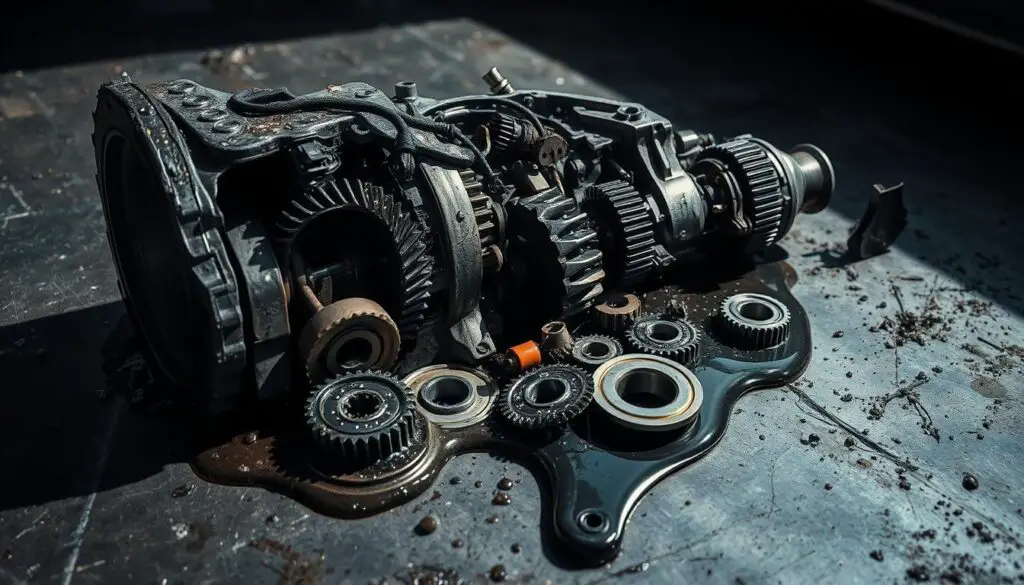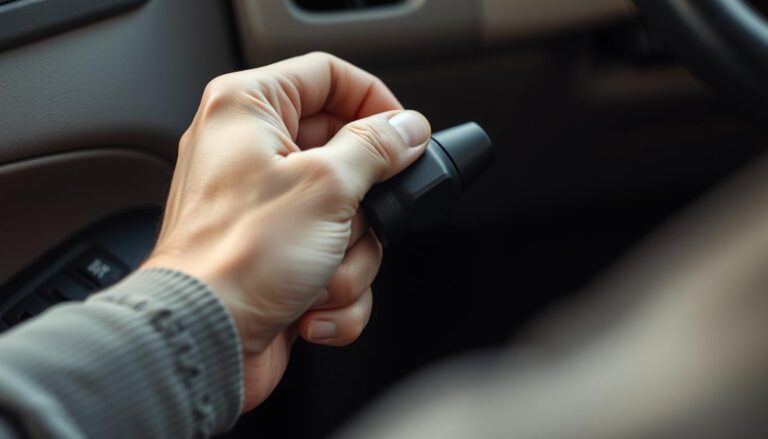Driving in low gear can be a stressful experience, especially if you’re unsure of the potential consequences for your vehicle’s transmission and engine.
When you drive in low gear, it can put additional stress on your vehicle’s engine and transmission, potentially leading to transmission damage or engine stress. However, by understanding what to do in such situations, you can minimize the risk of damage.
If you’ve driven in low gear by mistake, it’s essential to take the right steps to mitigate any potential harm. This includes checking your vehicle’s condition and taking corrective action to prevent further damage.
Key Takeaways
- Check your vehicle’s manual for guidance on driving in low gear.
- Be aware of the potential risks of transmission damage and engine stress.
- Take corrective action to prevent further damage if you’ve driven in low gear by mistake.
- Monitor your vehicle’s condition after the incident.
- Consider consulting a professional mechanic if you’re unsure about the damage.
Understanding What Happens When Driving in Low Gear
Understanding the mechanics behind transmission gears is crucial for safe driving. Transmission gears play a vital role in ensuring that the engine operates within an optimal RPM range, regardless of the vehicle’s speed.
How Transmission Gears Work
Transmission gears work by adjusting the gear ratio to balance speed and torque. In a manual transmission, the driver manually shifts gears using the clutch and gearshift. In an automatic transmission, the process is managed by the vehicle’s onboard computer and hydraulic controls.
The transmission system is designed to provide the right amount of power and efficiency for various driving conditions. For instance, lower gears provide more torque, which is useful for accelerating from a standstill or climbing steep hills.
Signs You’re Accidentally Driving in Low Gear
If you’re accidentally driving in low gear, you might notice that your engine is revving higher than usual, or the vehicle is not accelerating as smoothly as expected. Other signs include:
- Unusual engine noise
- Decreased fuel efficiency
- A noticeable lack of power when accelerating
Different Types of Low Gear Situations
Low gear situations can arise in various driving scenarios, such as:
| Situation | Description |
|---|---|
| Climbing steep hills | Low gear is used to maintain power and control. |
| Towing heavy loads | Low gear helps in managing the additional weight. |
| Driving on slippery roads | Low gear can help improve traction. |
Potential Consequences of Driving in Low Gear
Low gear driving is more than just an inconvenience; it can cause significant stress to your vehicle’s engine and transmission. When you drive in low gear, you’re putting extra strain on various components, which can lead to a range of problems.
Engine Stress and RPM Issues
Driving in low gear typically results in higher RPMs (revolutions per minute), which can cause engine stress. The engine is forced to work harder, leading to increased wear and tear on its components. This can result in premature aging and potentially costly repairs.
Some signs of engine stress due to low gear driving include:
- Increased engine noise
- Vibrations while driving
- Decreased engine performance
Transmission Damage Risks
The transmission is another critical component that suffers when you’re driving in low gear. The excessive strain can lead to transmission damage, including worn-out gears and clutch packs. If not addressed, this can result in costly repairs or even require a full transmission replacement.

Fuel Efficiency Impact
Driving in low gear can also negatively impact your vehicle’s fuel efficiency. The increased engine RPMs mean your vehicle is consuming more fuel than necessary, leading to decreased miles per gallon. This not only affects your wallet but also has environmental implications.
“Fuel efficiency is not just about saving money; it’s also about reducing our carbon footprint.”
Performance Limitations
Lastly, driving in low gear imposes significant performance limitations. Your vehicle may struggle with acceleration, and you might notice a decrease in overall power output. This can be particularly problematic when merging onto highways or climbing steep inclines.
In conclusion, driving in low gear can have far-reaching consequences for your vehicle, affecting engine health, transmission integrity, fuel efficiency, and overall performance. It’s crucial to be aware of these risks and take corrective action to avoid long-term damage.
Immediate Steps to Take When You Realize You’re in Low Gear
Realizing you’re driving in low gear can be alarming, but taking the right steps can mitigate any adverse effects on your vehicle. The key is to remain calm and follow a straightforward process to correct your gear usage.
Safely Shifting to the Correct Gear
To safely shift to the correct gear, first, ensure you’re driving on a level surface and not on an incline, as this can affect your vehicle’s response. Next, ease off the accelerator to reduce the load on the engine and transmission. Then, gently shift into the appropriate gear for your current speed. For automatic transmissions, this usually means shifting into ‘D’ or the appropriate drive gear. For manual transmissions, smoothly shift into the correct gear, making sure to match your speed and RPMs appropriately.
What Not to Do When You Notice the Problem
Avoid slamming on the brakes or forcing the gear shift, as this can cause further stress to your vehicle’s transmission. Also, refrain from continuing to drive in low gear for an extended period, as this can lead to increased wear on your engine and transmission. It’s also advisable not to ignore the issue, hoping it will resolve itself, as this could result in more severe problems down the line.
Assessing Immediate Vehicle Response
After correcting your gear usage, pay attention to how your vehicle responds. Listen for any unusual noises and monitor your dashboard for warning lights. Check your transmission and engine performance to ensure they’re operating smoothly. If you notice any adverse symptoms, such as slipping or hesitation, it may be wise to have your vehicle inspected by a professional mechanic.
| Action | Description | Benefit |
|---|---|---|
| Safely shifting gears | Ease off the accelerator and shift into the correct gear | Reduces stress on the engine and transmission |
| Avoiding harsh actions | Don’t slam on the brakes or force gear shifts | Prevents further damage to the transmission |
| Monitoring vehicle response | Check for unusual noises and dashboard warnings | Helps identify potential issues early |
Accidentally Drove in Low Gear: Understanding the Impacts on Your Vehicle
The consequences of accidentally driving in low gear can be far-reaching, affecting various components of your vehicle. Understanding these impacts is crucial for maintaining your vehicle’s health and preventing potential damage.
Short-Term Effects on Vehicle Components
Driving in low gear can immediately affect your vehicle’s performance. The engine may strain, leading to increased RPMs, which can cause overheating and potential engine damage. Transmission components may also experience additional stress, potentially leading to premature wear.
Transmission strain is a significant concern, as it can lead to costly repairs if not addressed promptly. Moreover, driving in low gear can result in decreased fuel efficiency, as the engine works harder than necessary.
Long-Term Damage Assessment
Prolonged driving in low gear can lead to more severe, long-term damage. Continuous strain on the engine and transmission can result in premature wear and tear, potentially leading to costly repairs or even component failure.
“Neglecting to correct low gear driving can lead to significant repairs down the line, including potential transmission replacement.”
Factors That Determine Severity of Impact
Several factors influence the severity of the impact when driving in low gear. Understanding these factors can help you assess the potential damage.
Duration of Low Gear Driving
The longer you drive in low gear, the more strain you put on your vehicle’s engine and transmission. Extended periods of low gear driving increase the risk of damage.
Speed and Load Conditions
Driving conditions, including speed and load, play a significant role in determining the impact of low gear driving. For instance, driving uphill or carrying heavy loads in low gear exacerbates the strain on the engine and transmission.
Vehicle Type and Age
The type and age of your vehicle also affect how driving in low gear impacts its components. Older vehicles or those with high-performance capabilities may be more susceptible to damage.
| Factor | Impact on Vehicle |
|---|---|
| Duration of Low Gear Driving | Increased strain on engine and transmission |
| Speed and Load Conditions | Exacerbated strain when driving uphill or carrying heavy loads |
| Vehicle Type and Age | Older or high-performance vehicles more susceptible to damage |
By understanding these factors and the potential impacts of driving in low gear, you can take proactive steps to mitigate damage and maintain your vehicle’s health.
When to Seek Professional Help
Recognizing the signs that indicate the need for professional assistance is vital after accidentally driving in low gear. If you’ve been driving in low gear and are experiencing unusual noises, vibrations, or performance issues, it’s crucial to seek help promptly.
Warning Signs That Require Immediate Attention
Several warning signs may indicate that your vehicle needs immediate attention. These include:
- Unusual Noises: Grinding, whining, or clunking sounds when shifting gears or driving.
- Vibrations: Excessive vibration while driving, especially if it’s accompanied by other symptoms.
- Performance Issues: Slipping gears, hesitation, or a noticeable decrease in power.
If you notice any of these signs, it’s advisable to stop driving and seek professional help to avoid further damage.
Diagnostic Tests Mechanics Will Perform
When you take your vehicle to a mechanic, they will perform various diagnostic tests to assess the damage. These may include:
- Transmission fluid checks to identify any leaks or contamination.
- Computer diagnostics to scan for any error codes related to the transmission or engine.
- Physical inspections of the transmission and related components for signs of wear or damage.
These tests will help determine the extent of the damage and the necessary repairs.
Cost Considerations for Potential Repairs
The cost of repairs can vary widely depending on the extent of the damage. Factors influencing repair costs include:
- The type of vehicle and its transmission system.
- The extent of the damage to the transmission, engine, and other components.
- Labor costs, which can vary depending on the mechanic’s rates and the complexity of the repairs.
It’s essential to get a detailed estimate from your mechanic to understand the potential costs involved.
Conclusion
Accidentally driving in low gear can have significant implications for your vehicle’s performance and longevity. Understanding the key takeaways from this discussion is crucial for maintaining your vehicle’s health.
To summarize, driving in low gear can lead to engine stress, transmission damage, and decreased fuel efficiency. If you realize you’re in low gear, safely shifting to the correct gear is essential. Assessing your vehicle’s immediate response and understanding the potential long-term impacts can help you take corrective action.
The summary of these points highlights the importance of being mindful of your gear usage. By being aware of the signs of driving in low gear and taking prompt action, you can prevent damage and maintain your vehicle’s performance. Whether you’re an experienced driver or new to driving, understanding the implications of driving in low gear is vital for a safe and efficient driving experience.
FAQ
What happens if I drive in low gear for an extended period?
Driving in low gear for too long can cause excessive wear on your engine and transmission, potentially leading to increased repair costs and decreased fuel efficiency.
How do I know if I’m driving in low gear?
Signs that you’re driving in low gear include a significant increase in engine RPM, decreased vehicle speed, and unusual engine or transmission noises.
Can driving in low gear damage my transmission?
Yes, prolonged driving in low gear can cause transmission damage due to excessive heat buildup and stress on the transmission components.
What should I do if I realize I’m driving in low gear?
If you realize you’re driving in low gear, safely shift into the correct gear as soon as possible, and assess your vehicle’s response to ensure there are no issues.
Will driving in low gear affect my fuel efficiency?
Yes, driving in low gear can negatively impact your fuel efficiency, as your engine is working harder than necessary, consuming more fuel.
How can I avoid accidentally driving in low gear?
To avoid driving in low gear, stay focused on the road, use your vehicle’s gear indicators, and be mindful of your gear shifts, especially in heavy traffic or hilly terrain.
Can the type of vehicle I’m driving affect the impact of driving in low gear?
Yes, the type, age, and condition of your vehicle can influence the severity of the impact of driving in low gear, with older or high-performance vehicles potentially being more susceptible to damage.
What are the warning signs that I need to seek professional help after driving in low gear?
Warning signs that you should seek professional help include unusual noises, vibrations, or performance issues with your vehicle, as well as any dashboard warning lights.


